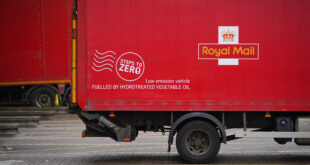In May 2020 Ian Lance of fund manager RWC Partners penned a blog in he looked at a group of stocks that were so cheap he felt that just one division within these companies was worth more than the value of the entire group. He argued that the remaining parts of these businesses were essentially ‘in for free’.
Lance said that some of his most successful investments have been ones in which sentiment towards a company becomes so negative that the valuation ends up making no sense versus the worth of its various parts. “Sometimes this is so extreme that you can buy a business where one part of it is worth more than the valuation of the entire group and so in effect you are getting the other parts for free,” he says.
Lance has been proved right with this thesis: for example, Royal Mail was trading at 172p when he published his blog on 20 May 2020; it is now trading at 465p. That’s a 170% return. Marks and Spencer was at 85p in May 2020, now it is 233p (+145%). Even conservative gainers are still up a respectable amount – e.g. Capita is up 35%. The FTSE All Share made +30% over the same time period.
But wait, there’s more. Lance argues that when share prices rise as much as some of these stocks have, it is tempting to conclude that they must be fairly valued, or even expensive. This fails to account for both how extreme the starting levels of undervaluation were as well as the fact that operating performance of some of these businesses has improved dramatically over the period.
#1. Royal Mail (LSE:RMG)
Lance’s argument in his original note was that the European parcels business (known as GLS) was worth £2bn and given that the entire group was valued at £1.7bn, the UK business was being ascribed a negative value. Royal Mail now believes that the GLS business will make €500m of operating profits in 2023/24 (Bloomberg Consensus Estimates) which if we value at 10x gives €5bn or £4.3bn. Coincidentally, this is the market cap of the entire group suggesting the market is still ascribing no value to the UK business despite the rise in the share price in the past year. This is now even more puzzling given the improvement in the outlook for the UK business which also has 50% market share in UK parcels.
#2. Marks and Spencer (LSE:MKS)
Lance’s thesis for Marks and Spencer shares was that the market was ascribing no value to its clothing and home business, if one put a reasonable value on its food retail operation and its stake in Ocado. Since the original blog, the share price has risen by 145% and whilst the market has belatedly begun to recognise the transformation going on within the company, he arguess that the market is not ascribing full value to the assets.
The current enterprise value of Marks and Spencer is £5.6bn or £4.1bn once we deduct the value of their stake in Ocado which Lance estimates at £1.5bn. The Marks & Spencer food business is forecast to make about £280m of operating profit (Bloomberg Consensus Estimates) this year which if valued on a post-tax p/e of 13x would be worth £2.9bn, whilst their International business could be worth £1.1bn.
Deducting these we can estimate that the Clothing and Home business is being valued by the stock market at c. £100m despite the fact that Marks is the UK’s number one clothing retailer by market share (number two on line) and is forecast to make operating profits of over £300m this year (Bloomberg Consensus Estimates) . In addition, it is worth considering that Marks owns a significant amount of the real estate from which it operates (net book value of the land and buildings is £2.2bn). Putting all of this together suggests that investors are yet to recognise the true value of the businesses.
#3. Royal Dutch Shell (LSE:RDSA)
Third Point, the US based activist fund manager, recently announced that that they had taken a significant position in Royal Dutch Shell in the belief that the entirety of the company’s stock market value is accounted for by what they termed its Energy Transition businesses (Integrated Gas, Marketing and Renewables) leaving its upstream, refining and chemicals businesses ‘in for free’. The former businesses generate EBITDA of $25bn which is valued on 10x would amount to the current enterprise value of $250bn. The latter three business units account for around 60% of the company’s profits and if accorded even a modest valuation (say 5x EBITDA) would crystallise upside of around 80% in the share price. Third Point are arguing for nothing short of a breakup of the company in order to realise this value and whilst they may or may not be successful, their action has demonstrated the potential inherent value that exists in the business.
#4. Vodafone (LSE:VOD)
A similar argument can be made for UK telecom operator Vodafone, although estimating what the constituent parts of Vodafone are worth is made considerably easier by the fact that certain parts of their business are listed (Vantage, Vodacom, Safaricom, Vodafone Idea and Indus Towers). Adjusting for these quoted assets, we can see how the stub is being valued and at today’s prices, it trades on around 4x EV/EBITDA and a 25% free cash flow yield. With the stakes in Vantage and Vodacom accounting for 60% of the equity value of Vodafone, there would appear to be a reasonable underpinning of the valuation of the residual business.
Conclusion
Rivian, a 12-year-old electric vehicle manufacturer with no revenue, listed on the US stock market last month and the shares doubled to the point that its market cap of $140bn made it the third most valuable carmaker in the world — just ahead of Volkswagen ($139bn), and in third place behind Toyota ($306bn) and Tesla ($1tn). To put the fact that it was valued more highly than Volkswagen into perspective, it is expected to produce c. 1000 cars this year versus 9.3m cars that Volkswagen produce.
Meanwhile, as Ian Lance and RWC Partners have tried to demonstrate above, there are still some very undervalued stocks available to investors including those that are so cheap that one division is worth more than the market cap of the entire group. In some cases, they are priced on mid double-digit free cash flow yields and high single digit dividend yields.
But rather than take advantage of these bargains, investors are chasing story stocks like Rivian or ploughing their money into cryptocurrencies and non-fungible tokens. “There are distinct echoes of 2000 in this behaviour and when the music stops, we know where we would rather be invested,” Lance says.
Related



